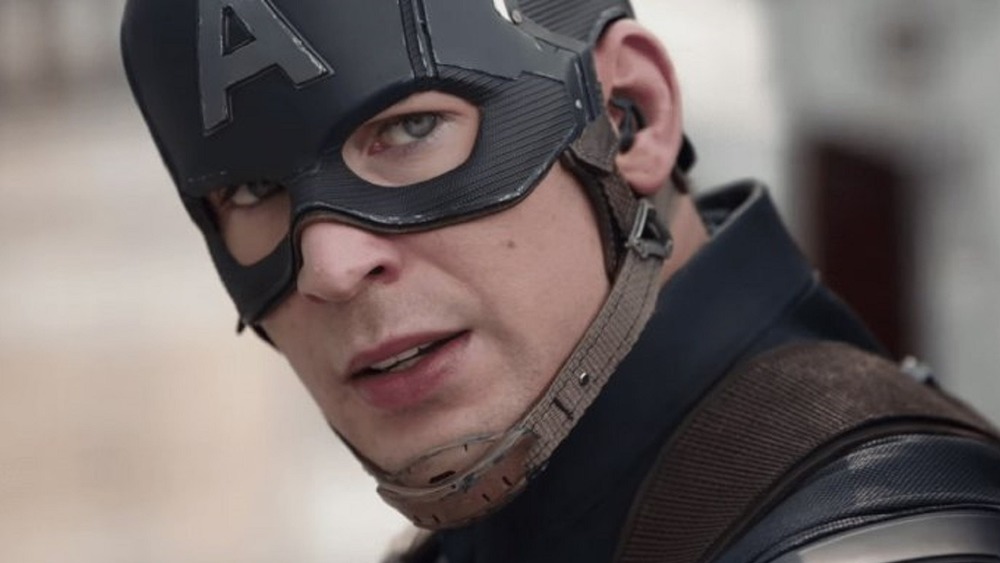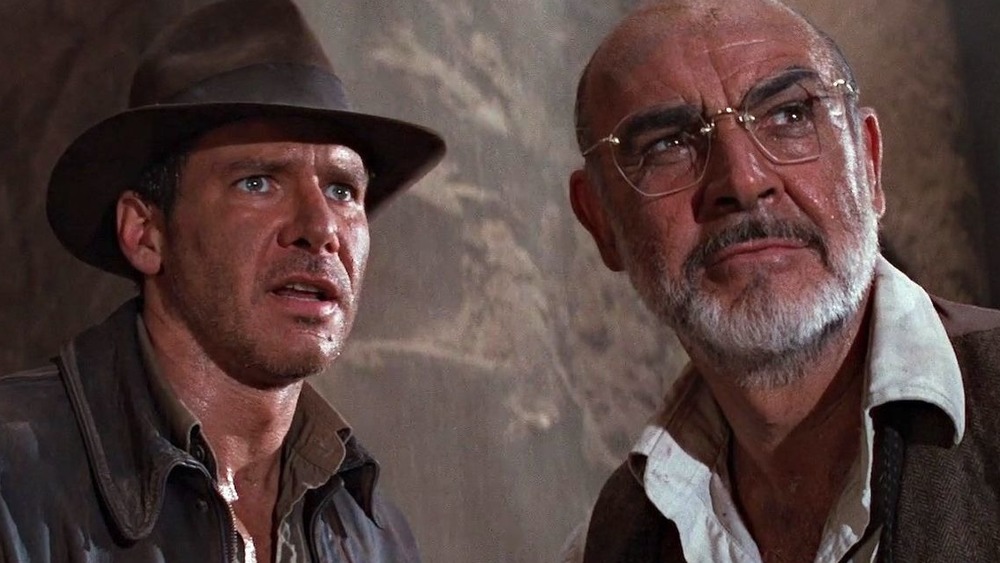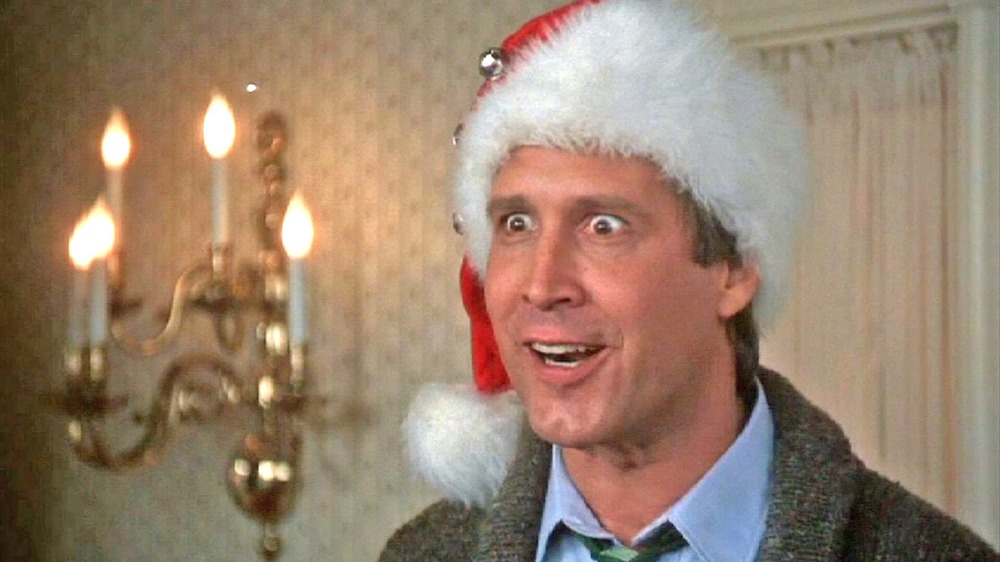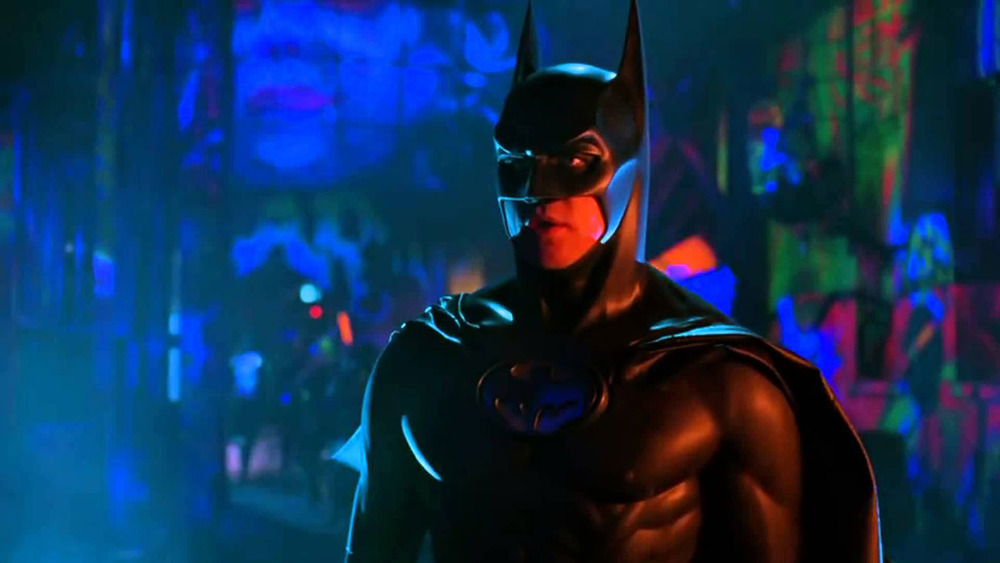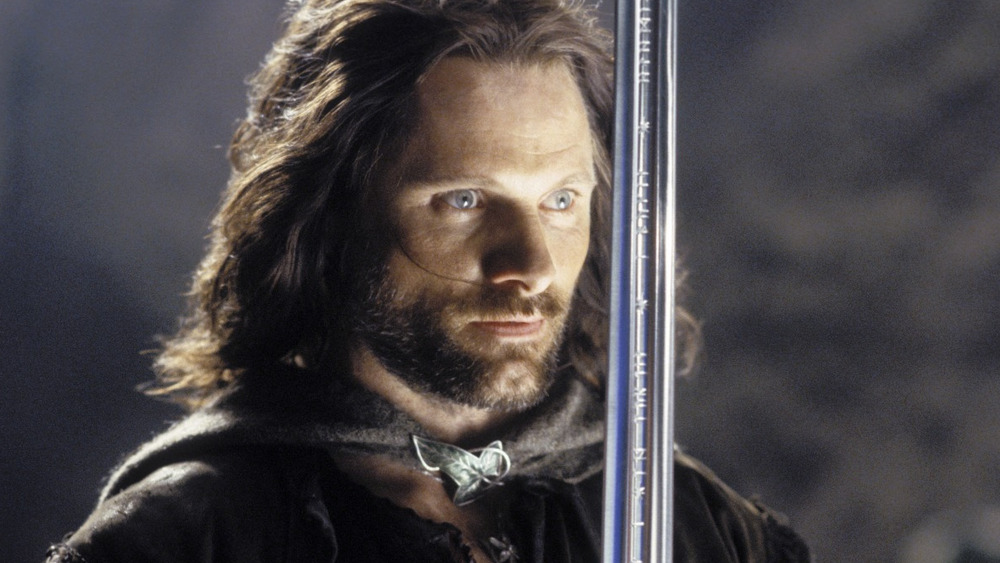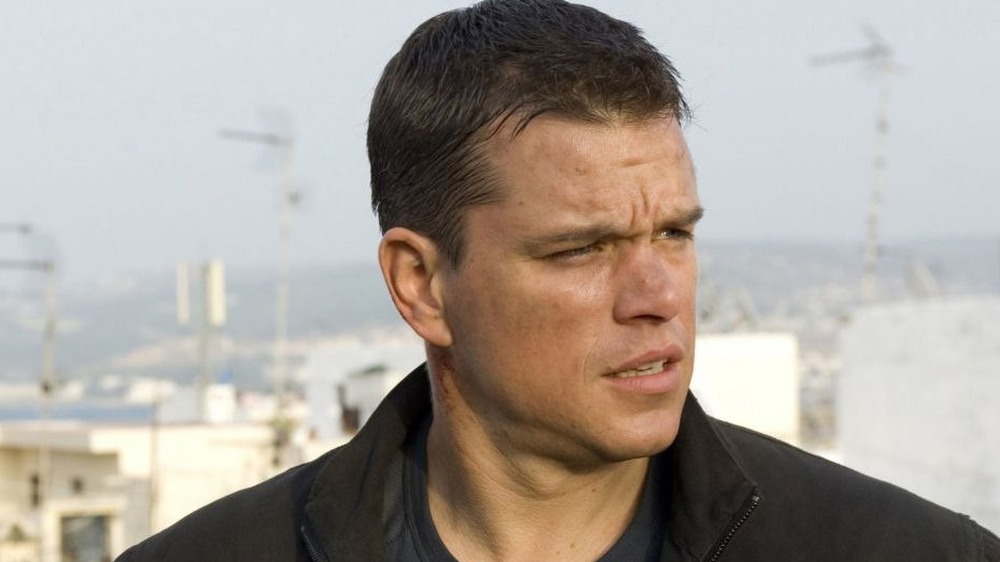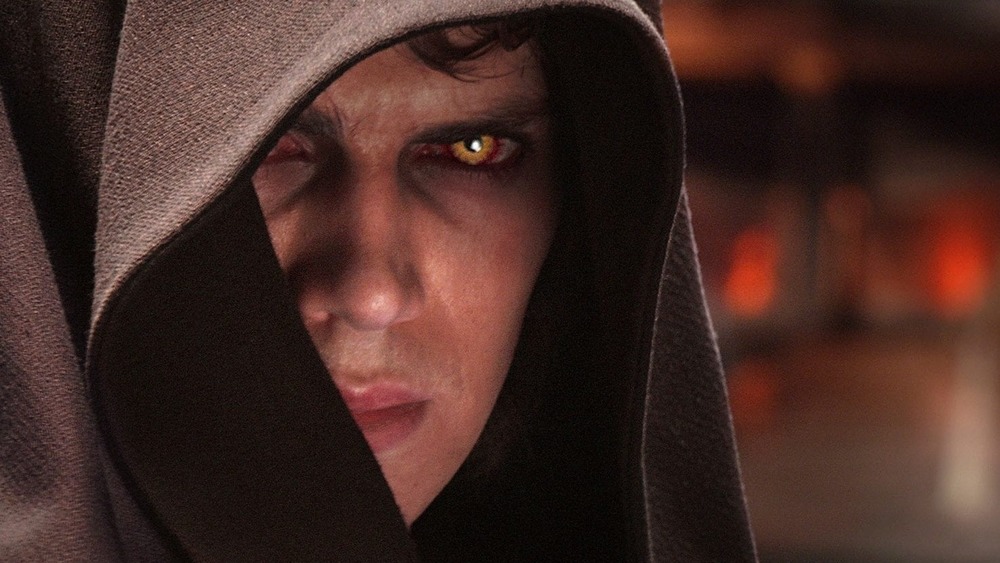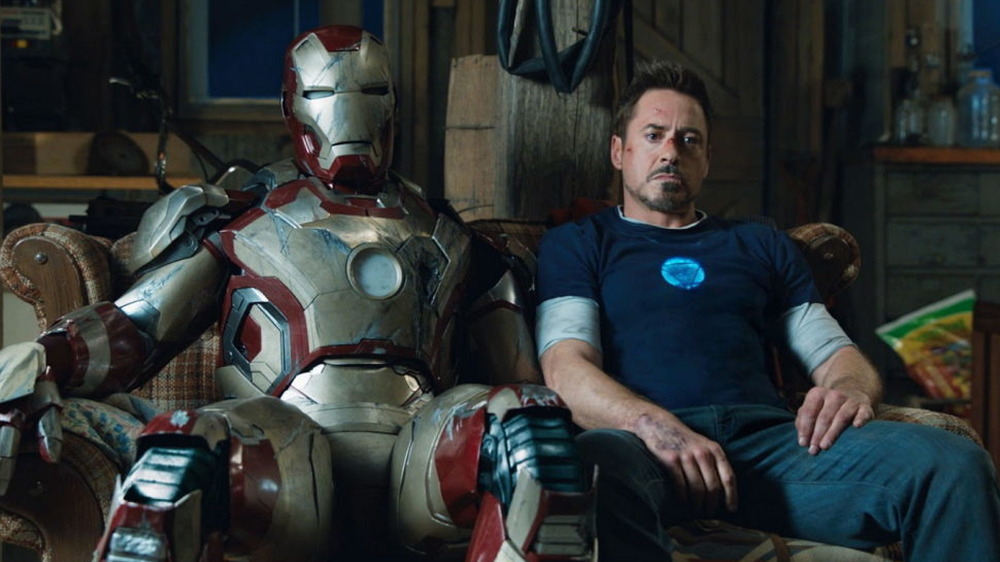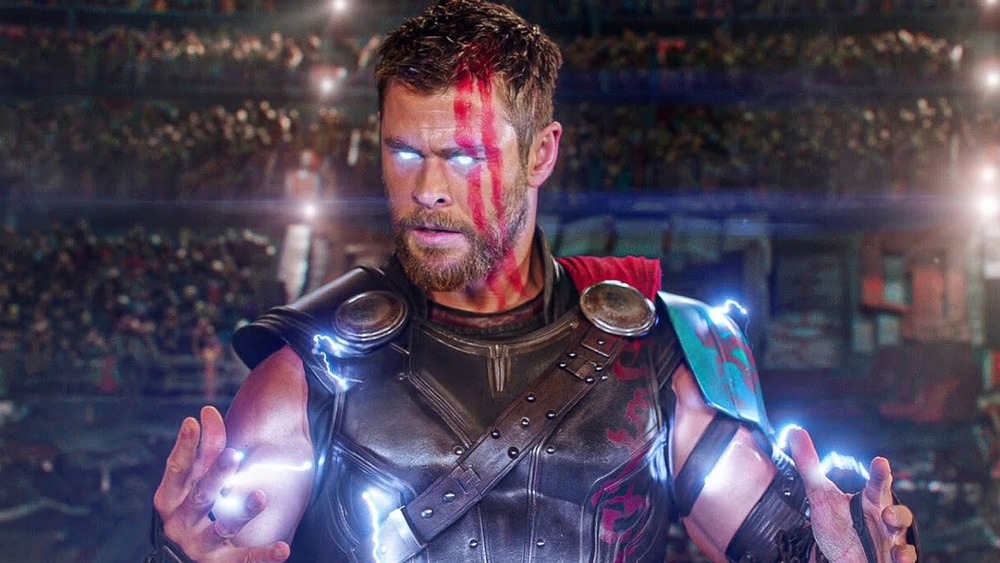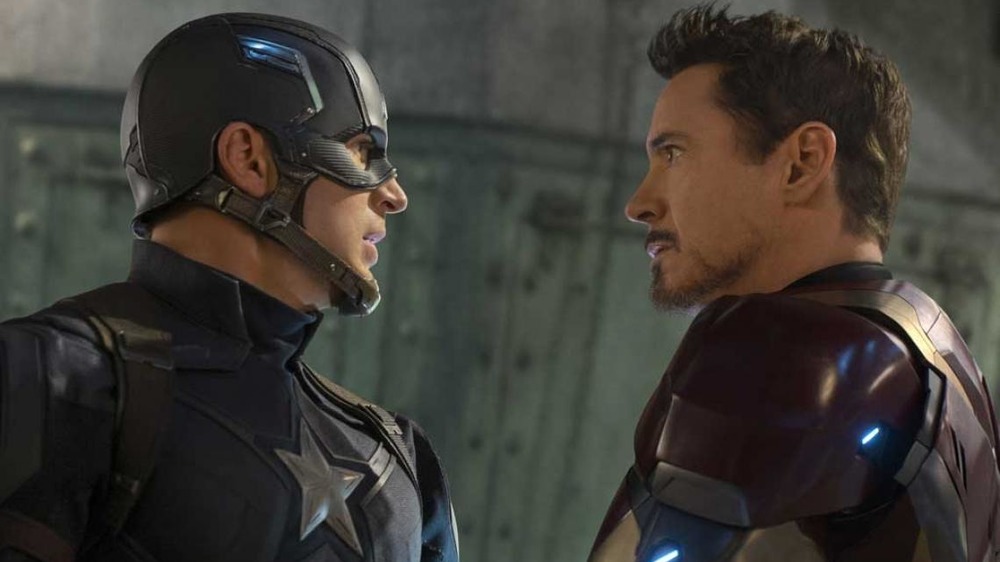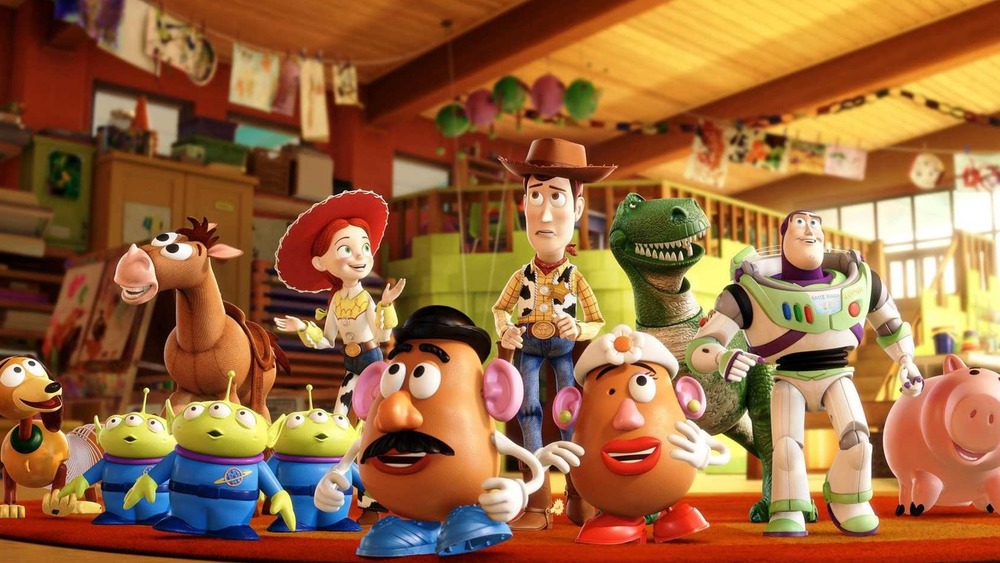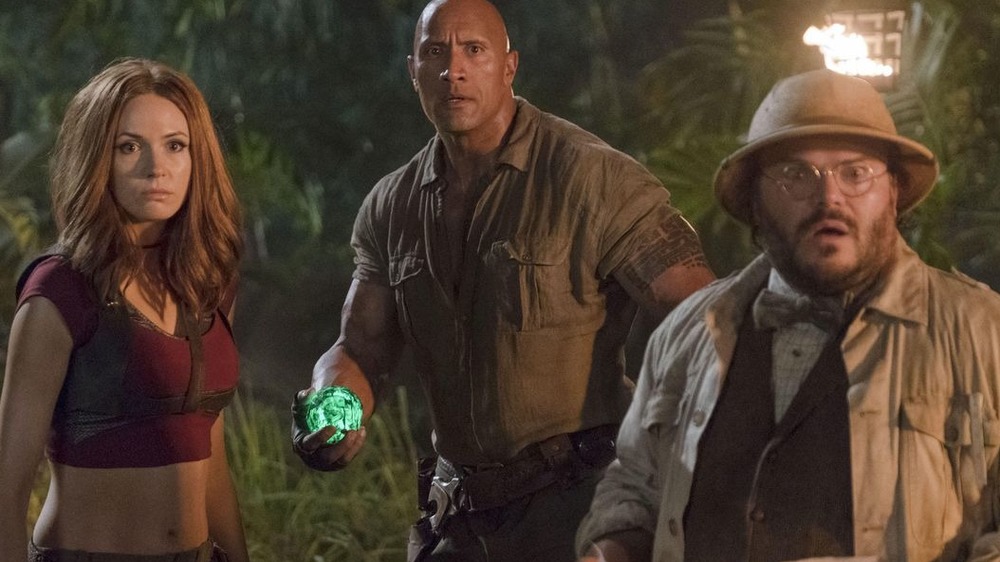Threequels That Made More Than Sequels
When it comes to box office results, franchises don't follow a set pattern. Some franchises show a steady decline and make less money after each movie (Sam Rami's Spider-Man trilogy), while others peak in the middle (Christopher Nolan's The Dark Knight trilogy). But what about franchises that follow a less familiar pattern, where the third film makes more than the second movie? What's the deal with threequels that make more than sequels?
Sometimes, the series' box office is U-shaped, with the first and third films making the most money after the second film dips. Other times, the franchise builds an audience along the way, and each film makes more money than the last (a movie studio's dream scenario). In each franchise on this list, the third film made more than the second at both the domestic and worldwide box office ... and sometimes it was a lot more. But which franchises are the ones out here making more money with their number three? Well, here are the threequels that made more than the sequels!
The Indiana Jones threequel crushed Temple of Doom
With Star Wars creator George Lucas producing and Jaws/Close Encounters of the Third Kind wunderkind Steven Spielberg directing, Raiders of the Lost Ark was destined to do well. Throw in Harrison Ford, a standout in the Star Wars series just on the cusp of A-list superstardom, and you've got all the ingredients for a mega-hit. And so it was. Raiders of the Lost Ark whipped up $225 million domestic and $367 million worldwide, roughly $640 million domestically and a whopping $1 billion worldwide in today's dollars. A sequel was a no brainer, though technically, 1984's Indiana Jones and The Temple of Doom was a prequel, but we digress.
Temple of Doom did pretty dang good, all things considered, though its $179 million domestic and $333 worldwide was a 21% and 10% drop from Raiders, respectively. Blame Doom's violence, which inspired the creation of the PG-13 rating. For 1989's series finale (or so we thought at the time), Indiana Jones and the Last Crusade, Spielberg and Lucas brought back Raiders highlights Denholm Elliott and Jonathan Rhys-Davies, and they hired A-lister Sean Connery as Indiana Jones' dad. Like the lost Ark in Raiders, the Holy Grail also had more mainstream appeal than Doom's Sankara Stones. It worked, as The Last Crusade earned $197 million domestically and $474 million worldwide, a solid bump from Doom. However, the series' biggest earner (not adjusted for inflation) is 2008's Indiana Jones and The Kingdom of the Crystal Skull.
Christmas Vacation lampooned that European sequel
National Lampoon's Vacation ranks alongside The Blues Brothers, Caddyshack, Beverly Hills Cop, and Ghostbusters as one of the great comedies from the 1980s, a decade where SNL alums took over Hollywood. Meanwhile, National Lampoon's Christmas Vacation is an annual holiday tradition for millions of people every year. The rest of the Vacation movies range from pretty funny (Vegas Vacation) to "meh" (European Vacation) to flaming hot garbage (2015's reboot/sequel Vacation). But hey, two comedy classics out of five movies spanning nearly 40 years ain't bad, right?
National Lampoon's Vacation kicked things off, introducing us to Chevy Chase's Clark, patriarch of the Griswold clan, and Randy Quaid as the stomach-turning, side-splitting Cousin Eddie. In total, the comedy earned $61 million in 1983, about $158 million today. The 1985 follow-up, European Vacation, sent the Griswolds across the pond, though less moviegoers went with them, earning a solid $49 million ($117 million today), a 20% drop from the first film. The Griswolds stayed home for the holidays (and wisely brought Cousin Eddie back) for 1989's Christmas Vacation, resulting in a franchise high of $71 million. While its $148 million adjusted gross is just slightly below the first film in terms of tickets sold, it was a $22 million and 31% improvement over the second.
Batman Forever far out-earned Batman Returns
As the only franchise to smash the opening-weekend record four times, the Batman series has a history of making box office history. But it hasn't been all sunshine, rainbows, and Bat-Signals. Batman & Robin infamously bombed in 1997, and while 1992's Batman Returns didn't tank, it's the black sheep of the Dark Knight's franchise.
On the flip side, backed by decades of pent-up demand, 1989's Batman obliterated the opening weekend record and dominated the domestic box office, out-grossing the runner-up, Indiana Jones and the Last Crusade, by more than $50 million. After Batman's historic success, director Tim Burton was essentially given carte blanche for the sequel, which Warner Brothers might've regretted after Batman Returns scared children and, even worse, nearly scared off brand partner McDonald's. Batman Returns made money with $162 domestically and $266 worldwide on an $80 million budget, but it was a steep 36% drop from Batman's $251 million domestic and $411 million worldwide gross.
A change was in order, and that came in the form of Joel Schumacher's Bat-nippled and neon-drenched Batman Forever. Say what you will about Batman Forever now, but it ruled the 1995 box office, ending the year second only to Toy Story, while its $184 million domestic and $336 million worldwide out-earned Batman Returns by $22 million and $70 million, respectively. Alas, Schumacher got carte blanche on his follow-up and, well, we all know how that turned out. Warner Brothers never learns.
This LOTR threequel was a royal winner
New Line Cinema was dubbed "the house that Freddy built" thanks to the enormously profitable A Nightmare on Elm Street. Flush with Freddy funds, New Line Cinema took a calculated risk and dipped their toe into more legitimate waters, giving horror director Peter Jackson (Braindead, The Frighteners) $281 million to film the three novels in J.R.R. Tolkien's Lord of the Rings trilogy. If $281 million seems like a lot, that's less than $100 million per film and about what 2014's The Hobbit: The Battle of the Five Armies cost on its own.
The Lord of the Rings series was insanely profitable and a movie studio's dream, earning $2.9 billion (about 10x its budget), with each film earning more than the last. The Fellowship of the Ring kicked things off with $315 million domestically and $887 million worldwide in 2001. The following year, The Two Towers topped that, earning $342 million domestically and $919 million worldwide. By 2003, The Lord of the Rings had expanded far beyond Tolkien's already considerable fan base to become a genuine pop culture monolith. The series' conclusion, The Return of the King, earned enough gold to seduce the greedy dragon Smaug, with $377 million domestically and $1.12 billion worldwide. At the time, King was second only to Titanic on the all-time box office chart and only the second film to gross $1 billion worldwide. So Tolkien fans should give Freddy Krueger a high five.
Bourne Ultimatum reigned supreme over the previous sequel
Novelist Robert Ludlum sadly died in March 2001, so he never got to see his greatest creation — the amnesia-ridden super-spy Jason Bourne — become one of the most bankable box office characters of the 21st century. The Bourne Identity opened strong in 2002, with a $27 million opening weekend en route to $121 million domestically and $214 million worldwide. As impressive as that was, it was chump change to where the series was going.
Bourne was back in 2004's The Bourne Supremacy, which earned $176 million domestically and $311 worldwide, while the series' then-finale, 2007's The Bourne Ultimatum, earned $227 million domestically ($13 million more than Identity's worldwide gross) and $444 million worldwide, a $133 million increase from Supremacy. Now that's how you build an audience.
However, you don't build an audience by getting rid of the character that moviegoers paid to see, as The Bourne Legacy learned the hard way in 2012. Despite Bourne being in the title, new series lead Jeremy Renner played Aaron Cross. Audiences weren't interested, as Legacy's legacy is a Bourne franchise low of $113 million domestically (bombing thanks to its $125 million budget). Universal smartly brought Matt Damon back for 2016's simply titled Jason Bourne, which earned $162 million domestically and $416 million worldwide.
Revenge of the Sith was a force to be reckoned with
The original Star Wars trilogy followed a U-shaped pattern at the box office, with the first film (A New Hope) and third film (Return of the Jedi) making more than the second film (The Empire Strikes Back) domestically. While Empire did outgross Jedi worldwide, its domestic dip is surprising given it's widely considered to be the best film in the franchise. History repeated itself 20 years later with the prequel trilogy, though this series wasn't nearly as popular with critics or fans.
As the first Star Wars movie in 16 years, The Phantom Menace rode on a wave of pent-up demand to $474 million domestically and $1 billion worldwide (counting re-releases) in 1999. However, the movie wasn't exactly well-received, so its underwhelming 2002 sequel, Attack of the Clones, suffered a steep 35% drop from Phantom, with $310 million domestically and $656 million worldwide.
However, Revenge of the Sith benefited big time from being the saga's conclusion (or so we thought at the time), and it made $380 million domestically and $848 million worldwide. Sure, it was far cry from Phantom's gross, but it was a 19% improvement domestically and 23% globally from Clones. Some box office analysts may have speculated the Star Wars sequel trilogy would follow a similar U-shaped pattern after The Last Jedi earned 35% less globally than The Force Awakens. However, the trilogy capper, The Rise of Skywalker, continued the downward trend.
Iron Man 3 earned Tony Stark money
Iron Man took the world (and probably its filmmakers, too) by surprise when it opened to $102 million in the summer of 2008, earning Spider-Man and Batman numbers for a B-list Marvel character. In fact, Iron Man opened higher and out-earned the much-anticipated fourth Indiana Jones film at the domestic box office, ending the year behind only The Dark Knight with $318 million domestically and $585 million worldwide.
Marvel couldn't have asked for a better launch for their grand cinematic universe. Iron Man 2 seemed destined to beat Iron Man's numbers when it opened in 2010, and though it did open higher ($128 million), it closed slightly lower domestically ($312 million). Of course, its $621 million worldwide was a 6% improvement.
Still, Iron Man 2 was the sequel to a much-loved movie. It should've done a lot better. Thankfully, The Avengers' historic $623 million domestic and $1.5 billion worldwide was a rising tide that lifted all ships, transforming every Marvel property into a bankable commodity (even Ant-Man made money) and franchises that were "solid hits" into major blockbusters. As the first post-Avengers sequel, Iron Man 3 benefitted the most, opening to $174 million domestically (one of the biggest opening weekends in the entire Marvel franchise), on its way to $408 million domestically and a staggering $1.2 billion worldwide. That's an improvement of $96 million domestically (24%) and $579 million worldwide (52%) over Iron Man 2.
The Thor threequel took the franchise to another level
Though Thor more than doubled its $150 million budget, it earned far less than either Iron Man or Iron Man 2, making its $181 million domestic and $449 million worldwide haul in 2011 seem (unfairly) underwhelming by comparison. Thor: The Dark World got a post-Avengers bump in 2013, earning $206 million domestically and $644 million worldwide, but its Tomatometer scores (while fresh) were the lowest in the entire MCU, signaling something was rotten in Asgard. Clearly a change was needed.
Most studios would be content to keep a good thing going, but Marvel believed the stoic, humorless Thor who spouted dialogue straight out of Beowulf, while clearly profitable, wasn't reaching the character's potential or maximizing the comedic talent of its star, Chris Hemsworth. So Marvel brought Kiwi comedy director Taika Waititi (Eagle vs. Shark, What We Do in the Shadows) to inject some personality into the franchise. Thor: Ragnarok opened in 2017, four years after Thor: The Dark World and two years after Avengers: Age of Ultron, but it suffered no signs of audience amnesia. The threequel opened to a series high of $122 million, on its way to $315 million domestic and $850 million worldwide, a $109 million (34%) domestic and $206 million (24%) worldwide improvement.
Skyfall brought Bond into the billion-dollar club
So far, the Daniel Craig James Bond series has followed a "every other movie is great" trend. Casino Royale was awesome, while Quantum of Solace put us to sleep. Skyfall was incredible, while Spectre had us chugging coffee and energy drinks just to stay conscious. Skyfall in particular was an anomaly in the series. James Bond has almost always been a profitable franchise (that's why they've made a bazillion of them), but it wasn't until Skyfall that Bond rubbed shoulders with superheroes, Jedi, dinosaurs, and hobbits in the exclusive "billion dollar club."
Both Casino Royale ($167 million domestically, $594 million worldwide) and Quantum of Solace ($169 million domestically, $591 million worldwide) made comparable numbers, though Solace's $230 million price tag cut into those profits considerably more than Royale's $102 million budget. Sony Pictures was probably expecting similar numbers for Skyfall, which is why they lowered its budget to $200 million, but they couldn't have imagined the blockbuster it would become.
Skyfall opened in 2012 to $88 million, but bolstered by strong word-of-mouth, the film became that Thanksgiving season's "must-see movie" and legged it out to $304 million domestic and $1.1 billion worldwide. That's an incredible 44% boost domestically ($135 million) and 47% worldwide ($503 million), and it remains James Bond's box office benchmark (unadjusted for inflation) by far.
Civil War defeated Captain America's sequel
Out of every Marvel character that got a post-Avengers bump, one of the most impressive was Steve Rogers. Captain America: The First Avenger got off to a solid start in 2011, earning $176 million domestically and $370 million worldwide, a tidy profit, though significantly less than Iron Man and Thor's debuts. After The Avengers conquered the world in 2012, it elevated the entire Marvel brand, including Captain America. The Winter Soldier opened in 2014, two years after The Avengers and three years after The First Avenger, earning $259 million domestically and $714 million worldwide. As impressive as this boost was, the Captain America series would see its biggest gains (and some of the biggest gains in the entire MCU) with the third film.
In fairness, Captain America: Civil War had a lot of advantages. It was essentially billed as Avengers 3 (it came out before Infinity War) and featured Captain America battling the franchise star, Robert Downey Jr's Iron Man. Plus, it featured the MCU debuts of Spider-Man and Black Panther. However, Civil War was still Cap's movie, and it crushed its predecessors, opening to $179 million (more than The First Avengers' entire domestic take) on its way to $408 million domestic and $1.1 billion worldwide. While Civil War was one of Marvel's most front-loaded movies, it out-earned The Winter Soldier by $149 million domestically and $384 million worldwide, posting gains of 36% and 34% respectively.
Toy Story 3 got a massive boost over Toy Story 2
Toy Story changed the game in 1995. Not only did it launch the CG-animation revolution, its $192 million domestic and $365 million worldwide haul made it the biggest domestic hit of the year. Four years later, Toy Story 2 did even better, earning $245 million domestically and $511 million worldwide. Then, 11 years passed between the second and third Toy Story movies, a lengthy gap that would spell the end of a less-beloved franchise. But moviegoers hadn't forgotten the Toy Story series — far from it, as they shared the series with a new generation, making its gains monumental.
Meanwhile, Pixar brand's reputation for quality continued to increase with the seven films the studio released between 1999 and 2010. Toy Story 3 opened in summer 2010 to $110 million, and like most Pixar movies, it had long legs, earning $415 million domestically and $1.07 billion worldwide. Now, Toy Story 3 has a bit of an advantage on this list, as it benefited from 11 years of inflation. However, in raw, unadjusted numbers, Toy Story 3 out-earned Toy Story 2 by $170 million domestically (40%) and $557 million (48%), one of the biggest gains on this list.
Jumanji's threequel rocked its sci-fi sequel
Jumanji was never meant to be a mega-blockbuster franchise. It started as a Robin Williams-star vehicle, one based on a popular children's book and bolstered by special effects. Jumanji cost $65 million to produce, and it earned $100 million domestically and $262 million worldwide. With that tidy profit, the story of Williams' Alan Parrish was seemingly concluded, as Sony saw no need to shoehorn a sequel (oh, what a different era the 1990s were). Ten years later, Sony released Jumanji's pseudo-sequel/spinoff Zathura, which was essentially the same concept, but this time, the board game sent its players into space. Without a clear connection to Jumanji and without a star of Williams' caliber, Zathura bombed hard, earning $28 million domestically and $58 million worldwide on a $65 million budget.
Numbers like that would kill most franchises, but Sony still saw gold in the board game and relaunched the series 12 years later with a totally different cast, tone, and setup. In 2018's Jumanji: Welcome to the Jungle, the board game became a video game, while the semi-dramatic tone of the first film became a playful, action-comedy hybrid. The glow-up worked, as Jumanji: Welcome to the Jungle punched far above its weight, working as counter-programming to the divisive Star Wars: The Last Jedi and becoming Sony's highest-grossing film ever (not adjusted for inflation) at the time. With $404 million domestically and $961 million worldwide, Welcome to the Jungle out-earned Zathura by $376 million and $903 million, an insane 93% improvement.
